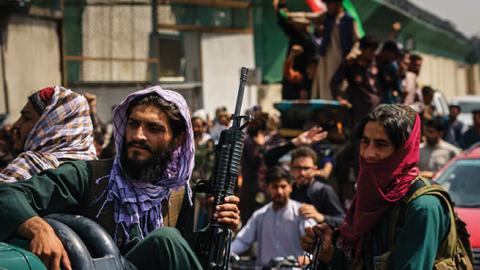The American failure in Afghanistan was primarily political. There was never a strategy, just a series of tactical moves: 20 annual plans for 20 years instead of one plan that might have brought a clearly defined mission to an end more quickly and successfully.
The U.S. went in after the 9/11 attacks to force out the brutal Taliban regime because it had protected al Qaeda. But the Bush administration assumed the Taliban would not pose a threat once al Qaeda was degraded and did little to prevent the regrouping of Taliban leaders across the border in Pakistan.
Meanwhile, a highly centralized government structure was written into the Afghan constitution, forcing ethnicities and tribes to vie for a share of power in Kabul. The result: The legitimacy of tribal strongmen, who retained influence in their respective areas, was diluted as they were forced to express allegiance to the central authorities, who remained weak.
Pakistan’s military dictator, Gen. Pervez Musharraf, helped to arrest many al Qaeda figures, but as he later admitted, he also continued to support the Taliban, to hedge against Indian influence in Afghanistan after an eventual U.S. withdrawal. Musharraf expected the U.S. to leave within a couple of years and was instrumental in helping the Taliban attack foreign forces in Afghanistan to expedite their departure. By 2006, American officials started speaking of a Pakistani “double game” and tried using aid and diplomatic bullying to end it, but they never recognized that Pakistan’s policy was shaped by its insecurities about India, and thus was unmoved by those strategies.
During the Obama administration, U.S. diplomats tried to micromanage Afghanistan’s internal politics, preferring Western-educated technocrats like Ashraf Ghani, while locally influential politicians were denigrated as “warlords” and deemed redundant, which did not help build a government that reflected or responded to Afghanistan’s ethnic and tribal realities. Meanwhile, U.S. officials with degrees in development economics and conflict resolution, but lacking understanding of Afghan dynamics, wielded immense influence over where and how to deploy U.S. resources devoted to stabilization.
Even the Afghan army that the U.S. tried to train was cast in America’s image, too high-tech for a low-tech country, and dependent on U.S. contractors for technical advice and maintenance. And though it takes decades to rise to the rank of general in the U.S. Army, the U.S. focus on leaving meant Afghan officers were promoted in too much of a hurry to provide mature leadership.
Instead of addressing any of these problems, discussion about Afghanistan was ultimately reduced to its being America’s longest war. When Presidents Trump and Biden decided to talk directly to the Taliban about U.S. withdrawal, it further undermined the Afghan government and boosted Taliban morale. After worrying for so long about staying too long, the U.S. eventually left Afghanistan back in the hands of the same extremists it went in to fight.
Read in the Wall Street Journal

















